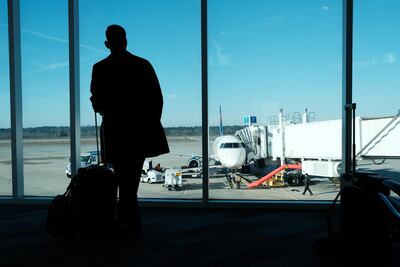Years ago, catching the train to the airport, I nearly tore my Achilles tendon while dashing up the ramp to a train platform. I dragged myself on to the train and eventually disembarked at the airport. My gate seemed at an impossible distance, injured as I was.
I tried to find a doctor, a lift, moral support, painkillers, a chair, ultimately clenching my teeth and venturing on. And that is when it dawned on me: events that happen in the real world occur also in that microcosm that is the airport: life, work, shopping, injuries, entertainment, finding and losing things, running between boarding gates, milling about in shops, laughing, crying, arguing, experiencing anxiety, frustration, elation and even birth and death.
At the airport, in the time in an aircraft and between destinations, people can feel concentrated human emotions.
If that is the case, why are so many airports not responsive to these human experiences? Why are so many mere corridors to convey human cattle, squeezing us out on to the tarmac, where smoking cubicles and cabs await, or pressing us into crammed flying tubes?

The short answer is that it is easy to make cold, functional airports that suffice for most people. But alternatives exist. There are airports that are efficient but also inviting and offer a positive experience. We all have our lists of best and worst airports. As we cast our eye to airports of the future, it is worth thinking of what makes a great airport. There are at least three criteria.
First is the human-centric response to smoothly get everyone from A to B.
Technology can tailor the logistics to suit individual needs. So there is the low-hanging fruit – say, an app that could inform travellers about visa requirements and the validity of their most recent Covid-19 test. All necessary entry forms could be completed on this app and submitted to relevant authorities so that by the time a customs agent opens a passenger's passport, all paperwork has already been processed.

Airports around the world could provide high-speed, secure and free internet. This will make it easy to find clear directions to transit routes or the immigration line, with the latter showing where to proceed to get tested for coronavirus and a different route displayed to those already tested.
AI-driven software can even enable hyper-personalised assistance to travellers by alerting airport staff to emotional states of travellers, so that help can be provided as needed. Passengers with small children, for example, could be directed to lower-traffic routes with resting and play places, while busy folks can follow the fastest route.
Second, the commercial experience of the airport could be far more tailored.
At the most basic level, it can be tailored by entering preferences into apps. One notch up will be technologies like typing-by-thinking – that is, through neural interfaces and harnessing neural networks that could merge our online preferences with real-world experiences and products.
Facebook has been developing these typing-by-thinking for some time now. These technologies capture moods and preferences of people and cater to them by, say, directing a person who wants to shop, to the duty free section.
And quite excitingly, in decades to come, arrival airports might provide travellers with bespoke 'printed' solutions – based on individuals’ uploaded specifications. Food, for example. The run-of-the-mill greasy fare so common at many airport outlets will be a thing of the past as personalised food will be 'printed' in real time, tailored to a traveller's unique tastes, DNA, allergies and health expectations.
Third is the layout, which is integral to the entire experience, look and feel of the airport of the future. Sure, design concepts come and go but it is apparent when an airport has been made with travellers in mind and not just operators. When the layout is easy, straightforward and non-hazardous to navigate then you know the process was done properly. This does not mean luxurious or over-the-top design.
It will, however, mean conveyors to make distances shorter, the use of sustainable materials to ensure planetary health, optimal temperature and light controls, supportive robots and displays that identify you personally and help customise the journey.
Does all of this sound much like some travel-themed entertainment park of the future? Perhaps.
It may be a theme park for some, while it may be an office for others, a resting place for others still and an experience of a lifetime for a few. The point is, one can tell that airports have catered to travellers when they have anticipated a diverse set of people's requirements, incorporated technology with people in mind, and are willing to innovate.
So, years ago, when I was limping toward a distant gate with a shredded tendon, it would have been valuable to have augmented reality show me the shortest way, with soothing music playing, a virtual medic to provide first aid and tell me what to do, a conveyor to aid my travels and a complimentary upgrade to first class as I boarded the plane as quickly as possible to rest my leg.
Well, a complimentary upgrade to first class may be the one thing beyond the limits of technological plausibility, even in the distant future.
Dr Patrick Noack is the executive director of future, foresight and imagination at the Dubai Future Foundation



